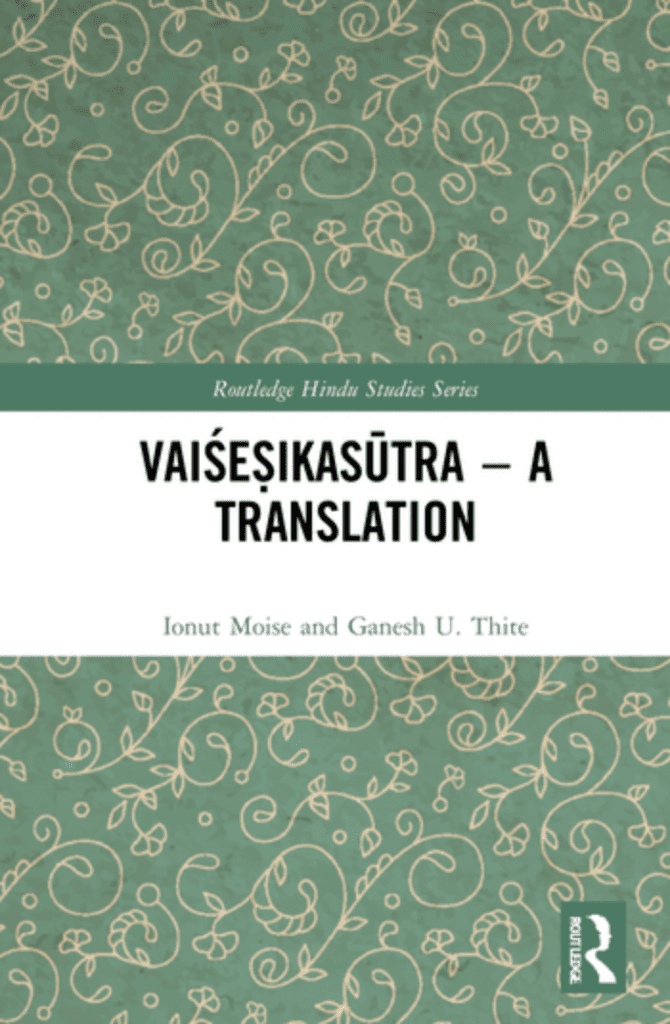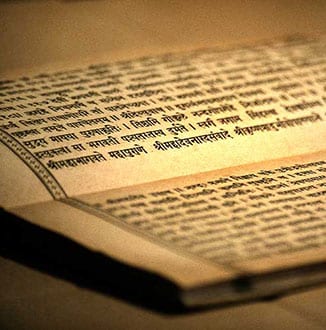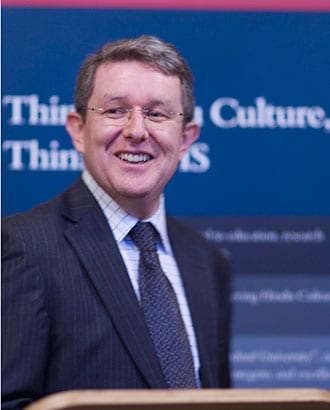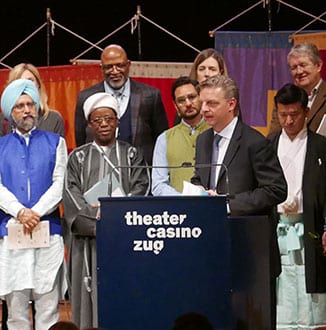Lecture List
Hilary Term 2024
Sunday 14th January – Saturday 9th March
Library opening hours are Monday to Friday, 9.30-4.30.
Hinduism 2: Traditions and Theologies
Week 1-8, Friday 4.00-5.00
Faculty of Theology & Religion
Dr Rembert Lutjeharms
This paper traces the development of Hinduism from the medieval period through to modernity. The course will examine Hindu scholasticism, devotional and tantric traditions, and modern Hindu thought. The lectures will explore themes of liberation, the soul and the divine, Tantra and meditation, devotional literature and the formation of modern Hindu identity.
Sanskrit and Pali Prelims 2
Sanskrit and Pali, Week 1-4, Wednesdays 4.30-5.30, Fridays 10.00-12.00
Sanskrit, Week 5-8, Wednesdays 4.30-6.00, Fridays 10.30-12.00
Pali, Week 5-8, Tuesdays 4.00-5.30, Thursdays 4.00-5.30
OCHS Library
Dr Bjarne Wernicke-Olesen
The course provides an introduction to Sanskrit for the preliminary paper of the Theology and Religion Faculty in Elementary Sanskrit. Students of Pali will join the Sanskrit course in Michaelmas Term and for the first four weeks of Hilary Term. From week 5 of Hilary Term, Sanskrit and Pali will be taught as two separate courses, i.e. Sanskrit Prelims and Pali for Sanskritists.
Sanskrit Prelims: A range of relevant Hindu and Buddhist texts will be chosen for translation and philological comment in the Sanskrit course. The class is designed to introduce students of Theology and Religion to the essentials of Sanskrit grammar, syntax, and vocabulary and its importance for the exegesis of Sanskrit texts. Students will learn to appreciate the interpretative nature of translation as a central discipline for the study of religions. By the end of the course students will have gained a basic competency in translating classical Sanskrit and reading relevant passages from texts such as the Chāndogya Upaniṣad, the Bhagavadgītā, the Haṭhayogapradīpikā and the Buddhist Heart Sūtra. The course book will be Walter Maurer’s The Sanskrit Language. Sanskrit Prelims continues throughout Michaelmas and Hilary Terms and for the first four weeks of Trinity.
Pali Prelims: The Pali course is designed to provide an easy philological introduction to Pali Buddhist texts via Sanskrit and introduce students of Theology and Religion to the essentials ofPali grammar, syntax, and vocabulary. A range of relevant Pali Buddhist texts will be chosen for translation and philological comment. We will read classical Theravāda Buddhist discourses from the Pāli Canon such as the Fire Sermon (Ādittapariyāya-sutta) and Dependent Origination (Paṭiccasamuppāda) as well as passages from the Dhammapadaand the Jātaka tales. Students will learn to appreciate the interpretative nature of translation as a central discipline for the study of religions. The course book will be Dines Andersen, A Pāli Reader and Pali Glossary, 2 vols. (1901) supplemented by Rune E. A. Johansson, Pali Buddhist Texts: An Introductory Reader and Grammar (1981).
Pali students will attend the same ‘Sanskrit and Pali’ classes as Sanskrit students in Michaelmas Term and weeks 1-4 of Hilary Term. From week 5 of Hilary Term, Pali and Sanskrit students will study in separate classes.
Readings in Phenomenology
Weeks 1-8, Monday 12.00-1.00
OCHS Library
Prof. Gavin Flood
Phenomenology is one of the most important developments in philosophy in the twentieth century, and it has also had a deep impact on other theoretical fields more widely conceived. This term we will continue reading Husserl, The Crisis of the European Sciences.
Readings in Vedānta
Week 1-8, Thursday 12.00-1.00
OCHS Library
Dr Rembert Lutjeharms
Vedānta—theology grounded in the systematic exegesis of the Upaniṣads—has for centuries been the primary discourse for Hindu thought. These reading sessions are intended for students who have at least an introductory knowledge of Sanskrit and are interested in Vedānta texts.
Senior Seminar in Indian Religions
Weeks 4 (Thursday 8 February) and week 7 (Wednesday 28 February), 4.30-6.00
OCHS Library
Dr Jessica Frazier
This series of regular seminars brings together scholars and students working on Indic philosophies and religions. It focuses on topics of current research: in each session, two people will present a context they are investigating for 20min, and then open it for discussion on key questions. All researchers, graduates and finalists in all areas are welcome to join.
Indian Philosophy Lectures
Week 1-4, Thursdays 2.00-3.00
Colin Matthews Room, Faculty of Philosophy, Radcliffe Humanities
Dr Jessica Frazier
These lectures explore philosophical debates and theories in Indian Philosophical traditions. In Hilary we will discuss Buddhist philosophies of no-self, idealism, metaphysical nihilism, and the possibility of ethics without selves. All are welcome.
Comparative Religion Seminar
Weeks 2, 4, 6, 8, Thursdays 2.00-3.00
OCHS Library
Prof. Gavin Flood and Dr Bjarne Wernicke-Olesen
These four seminars will focus on the project of comparison as integral to the study of religions. We will seek to clarify the project of comparison in relation to contemporary concerns in the study of religions and through focusing on a specific text. The seminar will be based on weekly readings, somewhat akin to Readings in Phenomenology. This will take up again the seminar series began some years ago. The book that we will begin with is Robert Bellah, Religion in Human Evolution: From the Palaeolithic to the Axial Age (Belknap Press, 2011).
Week 2, 25 January – chapter 1 ‘Religion and Reality’
Week 4, 8 February – chapter 2 ‘Religion and Evolution’
Week 6, 22 February – chapter 3 ‘Tribal Religion’
Week 8, 7 March – chapter 9 ‘The Axial Age IV: Ancient India’
Lectures of the Shivdasani Visiting Fellow
Shyamu Baba’s Worry
Week 5, Thursday 15 February, 2.00-3.00?
OCHS Library
Prof. David L. Haberman
During my stay at OCHS I will be translating and augmenting a lengthy 1984 Hindi commentary by the renowned Pushti Margiya scholar Shyam Manohar Goswami on the Chatuh-shloki, a short Sanskrit text written by Vallabhacharya in the sixteenth century. I was primarily drawn to this text because it outlines the foundational thought and practice of the Pushti Marg, the Path of Grace, in a way that identifies its unique features. As such, I believe that a presentation of this work for a wider audience will serve as a productive introduction to the Pushti Marg, a sampradaya of Braj Krishna bhakti still relatively misunderstood and unknown in the Western academy. Shyam Manohar Goswami’s commentary also gives voice to one of his major worries: that recent developments in the Pushti Marg under certain leadership threaten to destroy the distinctive characteristic of the sampradaya. Accordingly, in this talk I will examine the interpretive structure of the Chatuh-shloki, delineate some of the main distinguishing features of Pushti Margiya thought and practice, and explore why Shyam Manohar Goswami is so worried about how these features are today becoming diminished, or even disappearing.
Prof. David L. Haberman is Professor in the Religious Studies Department at the University of Indiana in the USA. He has research interests in medieval and modern movements of northern India. Much of his work has focused on the culture of Braj, an active Krishna pilgrimage site known for its lively temple festivals, performative traditions, and literary creations. Among his many books are ‘Understanding Climate Change through Religious Lifeworlds’ (Indiana University Press, 2021), ‘ Loving Stones: Worship of Mount Govardhan: Making the Impossible Possible in the Worship of Mount Govardhan’ (OUP 2020), and ‘People Trees, the worship of trees in Northern India’ (OUP, 2013).
Lectures of the J.P. And Beena Khaitan Visiting Fellow
The Meaning of Grammatical Gender in Sanskrit
Week 7, Thursday 29 February, 2.00-3.00
OCHS Library
Sibylle Koch
A short description of the three natural genders forms the starting point for the discussion of grammatical gender within the Sanskrit grammatical tradition as it is represented in the Mahābhāṣya (composed circa 150 BCE). Considering this description, the grammarians explore whether it is valid in the grammatical context. In other words, they examine whether speakers add suffixes such as the feminine suffixes to words when seeing that the referent has certain specific natural gender signs. After a humorous discussion, they conclude that the description of the three natural genders cannot be transposed into the grammatical context. The grammarians therefore formulate their ‘own theory’ of gender. This theory would seem to implicate the three grammatical genders in a broader theory regarding the transformation of matter. It is therefore readily applicable to all words referring to concrete objects, be they animate or inanimate. Centuries later, Bhartṛhari (fl. circa 5th century CE) presents and further develops this theory in the gender chapter of the Vākyapadīya. Furthermore, he makes it acceptable not only to the tenants of the Sāṃkhya–Yoga schools of thought, but also to the Vaiśeṣikas and the Jains. I start by outlining the grammarians’ ‘own theory’ of grammatical gender and then go on to show Bhartṛhari’s presentation of it. Finally, I consider how Bhartṛhari attempts to make the early gender theory acceptable to other systems of thought.
Sibylle Koch is a doctoral student at the University of Oxford under the supervision of Prof. Diwakar Acharya. She works on the Liṅgasamuddeśa in Bhartṛhari’s Vākyapadīya.
Other Lectures and Seminars
Purāṇas in vedāntic exegesis in the second millennium
Week 3, Thursday 1 Feburary, 2.00-3.00
OCHS Library
Dr Jonathan Duquette
The Purāṇas form a rich body of brahmanical literature dealing with topics as varied as mythology, cosmology, ritual, pilgrimage, and temple architecture. At the beginning of the second millennium, theologians of Vedānta began to use this textual corpus to lend authority to their teachings. Key to their exegesis was the postulate that Purāṇas possess epistemic authority (prāmāṇya), and thereby the capacity to function as ‘corroborating’ texts (upabṛṃhaṇa) to the Vedas. The question as to which Purāṇas have this capacity, and why, became a topic of debate in the early modern period, when exegetes of Vedānta begin to adopt radically different stances on vedāntic materials in light of their religious affiliations. The debate around the authority of Purāṇas eventually led to the radical claim, taken by the iconoclast 19th-century advaitin Rāmasubba Śāstrī, that the Purāṇas have no validity whatsoever.
Dr Jonathan Duquette is a scholar of South Asian religions whose work concentrates primarily on the history of late medieval and early modern Sanskrit intellectual traditions in India. He is Affiliated Lecturer in Sanskrit, Faculty of Divinity, and leader of the Late Vedānta Project in Cambridge. After completing his Ph.D. in religious studies at the University of Montreal (2011), Dr Duquette was a postdoctoral researcher in Hamburg (2012-13), Leiden (2013-14), Kyoto (2014-15) and Oxford (2015-2019, as a Newton International Fellow and then Marie-Curie Fellow). He was also twice a visiting 5 researcher at the Austrian Academy of Sciences, Vienna. He has published a monograph (Oxford University Press, 2021) on the rise of Śivādvaita Vedānta, a poorly understood tradition of philosophical theology that rose to prominence in early modern South India. Trained initially as a physicist, Dr Duquette also nourishes an interest for the dialogue between natural sciences and religions as well as for recent developments in philosophy of science and comparative philosophy. He has published articles in Religions of South Asia, Journal of Indological Studies, Numen, Philosophy East and West and the Journal of Indian Philosophy, and also contributed to the Wiley-Blackwell Encyclopaedia for Philosophy of Religion.





